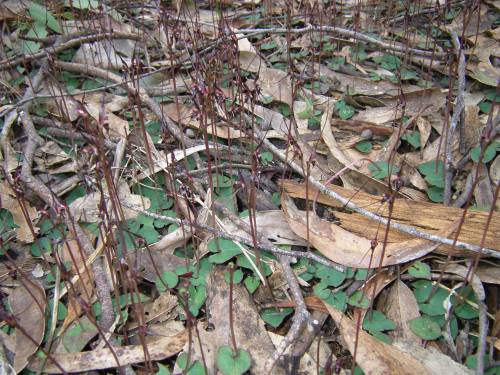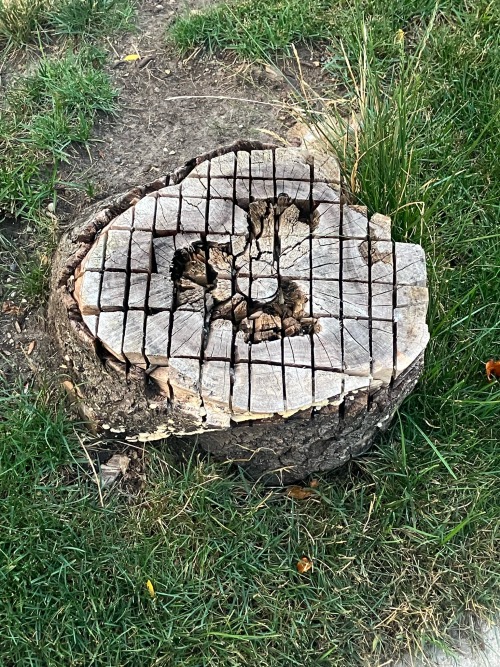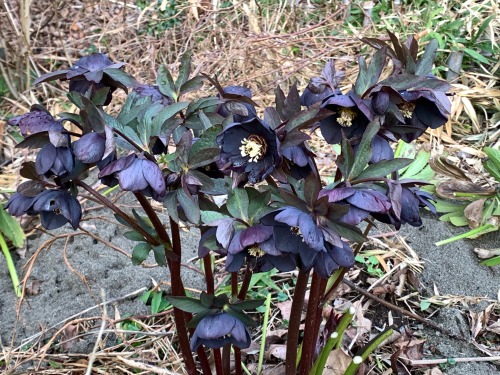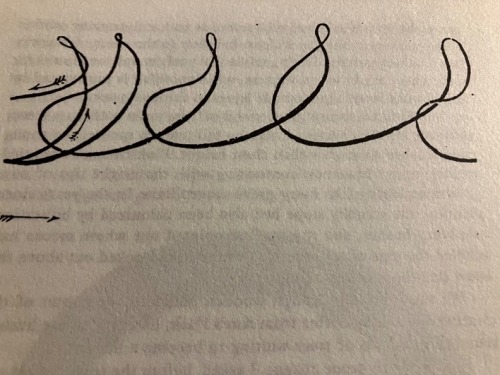Na Bachlóga

na bachlóga
the buds
More Posts from Calystegia and Others
Ok but can we talk about non-native and invasive species in a nuanced way?
There’s more to this topic than ‘native = good’ and ‘non-native = invasive and therefore bad’. I also see horrible analogies with human immigration, which…no. Just no.
Let’s sit back and learn about species and how they work inside and outside their native ranges! Presented by: someone who studied ecology.
Broadly speaking, when talking about species in an ecosystem, we can divide them into four categories: native non-invasive, non-native, non-native invasive, and native invasive.
Because ‘native’ and ‘invasive’ are two different things.
Native and non-native refers to the natural range of a species: where it is found without human intervention. Is it there on its own, or did it arrive in a place because of human activity?
Non-invasive and invasive refers to how it interacts with its ecosystem. A non-invasive species slots in nicely. It has its niche, it is able to survive and thrive, and its presence does not threaten the ecosystem as a whole. An invasive species, on the other hand, survives, thrives, and threatens the balance of an ecosystem.
Let’s have some examples! (mostly featuring North America, because that’s the region I’m most familiar with)
Native Non-invasive
Native bees! Bee species (may be social or solitary) that pollinate plants.
And stopping here bc I think we get the point.
Non-native
Common Dandelion: Introduced from Europe. Considered an agricultural weed, but does no harm to the North American ecosystem. Used as a food source by many insects and animals. Is prolific, but does not force other species out.
European Honeybee: Introduced from Eurasia. Massively important insect for agricultural pollination. Can compete with native pollinators but does not usually out compete them.
Non-native Invasive
Emerald Ash Borer: Beetle introduced from Asia. In places where it is non-native, it is incredibly destructive to ash trees (in its native range, predators and resistant trees keep it in check). It threatens North America’s entire ash population.
Hydrilla: An Old World aquatic plant introduced to North America. Aggressively displaces native plant species, and can interfere with fish spawning areas and bird feeding areas.
Native Invasive
White Tailed Deer: Local extinction of the deer’s predators caused a massive population boom. Overgrazing by large deer populations has significantly changed the landscape, preventing forests from maturing and altering the species composition of an area. Regulated hunting keeps deer populations managed.
Sea Urchins: The fur trade nearly wiped out the sea otters that eat them. Without sea otters to keep urchin populations in check, sea urchins overgrazed on kelp forests, leading to the destruction and loss of kelp and habitat. Sea otter conservation has helped control urchin populations, and keeps the kelp forest habitat healthy.
—
There are a few common threads here:
The first is that human activities wind up causing most ecosystem damage. We introduce species. We disrupt food chains. We try to force human moral values onto ecosystems and species. And when we make a mistake, it’s up to us to mitigate or reverse the damage.
The second is that human moral values really cannot be applied to ecosystems. There are no ‘good’ or ‘bad’ species. Every species has its place. Applying emotional and moral rhetoric to ecology works against our understanding of how our ecosystems work.
Third: the topic of invasive and non-native species is more complex than most of the dialogue surrounding it. Let’s elevate our discussions.
Fourth: If you ever compare immigrants or minorities to invasive species, I will end you.
There are more nuances to this topic than I presented as well! This is not meant to be a deep dive, but a primer.


puya berteroniana
David Midgley

White Calla


Acianthus caudatus.
Orchidaceae: Diurideae.
By Start with the Leaves. [x]

good god theyre giving the weevils adderall
In an age that witnessed considerable support for social improvement, public schools often took center stage. By the 1830s, a chorus of reform-minded people began to sing the praises of free, tax-supported schools: Thaddeus Stevens, later a prominent Republican activist in Pennsylvania; Catharine Beecher, advocate of more educational opportunities for women; Caleb Mills, an evangelical minister who later became Indiana's leading common school advocate; and even notable Southerners, who faced the greatest opposition and whose efforts bore the least fruit. Enthusiasm for social improvement through education flourished. Since the turn of the century, countless pamphlets, speeches, reports, petitions, testimonials, newspaper editorials, books, and articles had promoted the importance of education in a republic. A few dozen educational periodicals also popularized the cause of learning by promoting a class-inclusive school system, especially for white children.
In Philadelphia, New York, and other cities, the editors of workingmen's newspaper - the voice of the skilled artisan minority - despaired over the fate of youth as apprenticeships declined and unskilled factory labor increased; they endorsed instituting a common system and eliminating the stigma attached to free schools. "I think that no such thing as charities should be instituted for the instruction of youth," wrote one articulate worker in the Mechanics' Free Press in Philadelphia in 1828. He favored free schools dependent not on "private charities" but "founded and supported by the government itself." One Ohioan added, "Unless the Common Schools can be made to educate the whole people, the poor as well as the rich, they are not worthy of the support of the patriot or the philanthropist." "Give to education... a clear field and fair play," said a recent immigrant in A Treatise on American Popular Education in 1839, "and your poor houses, lazarettos, and hospitals will stand empty, your prisons and penitentiaries will lack inmates, and the whole country will be filled with wise, industrious, and happy inhabitants. Immorality, vice and crime, disease, misery and poverty, will vanish from our regions, and morality, virtue and fidelity, with health, prosperity, and abundance, will make their permanent home among us.”
Born in an age when millennial ideals, such as universal peace and prosperity following Christ's imminent return to earth, influenced wide sectors of the population, the common schools became a useful barometer of the extensive social changes that transformed the nation before the Civil War. Cities, factories, and foreign immigration generated moral panic and social fears among many northern reformers, whose search for solutions to public ills centered on a more expansive public school system. Reflecting the contradictory passions of the reformers, schools not only favored greater access to literacy and academic study but simultaneously downplayed intellectual achievement by elevating the moral aims of instruction. America's ambivalent attitude toward the life of the mind and scholarship thus found expression in the nation's emerging school system, where character development and moral uplift took precedence even as lifeless instruction in academic subjects predominated. Setting a pattern that long endured, reform-minded citizens increasingly assumed that individual welfare and social progress depended on an extensive network of public schools.
william j. reese, america's public schools from the common school to "no child left behind"

Ragwort
-
 currentesurience reblogged this · 2 weeks ago
currentesurience reblogged this · 2 weeks ago -
 himejoshiba reblogged this · 2 weeks ago
himejoshiba reblogged this · 2 weeks ago -
 kulekrizpy liked this · 2 weeks ago
kulekrizpy liked this · 2 weeks ago -
 toomuchpurple reblogged this · 2 weeks ago
toomuchpurple reblogged this · 2 weeks ago -
 toomuchpurple liked this · 3 weeks ago
toomuchpurple liked this · 3 weeks ago -
 mickmundy reblogged this · 3 weeks ago
mickmundy reblogged this · 3 weeks ago -
 new-bein liked this · 3 weeks ago
new-bein liked this · 3 weeks ago -
 littlewitch-luna reblogged this · 3 weeks ago
littlewitch-luna reblogged this · 3 weeks ago -
 northern-snowflake liked this · 3 weeks ago
northern-snowflake liked this · 3 weeks ago -
 countfrogulasspookycastle liked this · 3 weeks ago
countfrogulasspookycastle liked this · 3 weeks ago -
 disingenousnt reblogged this · 3 weeks ago
disingenousnt reblogged this · 3 weeks ago -
 purpledaphodil liked this · 3 weeks ago
purpledaphodil liked this · 3 weeks ago -
 saliest liked this · 3 weeks ago
saliest liked this · 3 weeks ago -
 radiodark reblogged this · 3 weeks ago
radiodark reblogged this · 3 weeks ago -
 liivey0urlifee-xx liked this · 3 weeks ago
liivey0urlifee-xx liked this · 3 weeks ago -
 myapathyhaspeaked liked this · 3 weeks ago
myapathyhaspeaked liked this · 3 weeks ago -
 belpaja reblogged this · 3 weeks ago
belpaja reblogged this · 3 weeks ago -
 heartwombmind liked this · 3 weeks ago
heartwombmind liked this · 3 weeks ago -
 vanyamazov reblogged this · 4 weeks ago
vanyamazov reblogged this · 4 weeks ago -
 vanyamazov liked this · 4 weeks ago
vanyamazov liked this · 4 weeks ago -
 reesot liked this · 4 weeks ago
reesot liked this · 4 weeks ago -
 s45h4x liked this · 4 weeks ago
s45h4x liked this · 4 weeks ago -
 universalstudent liked this · 4 weeks ago
universalstudent liked this · 4 weeks ago -
 sa-sssa liked this · 4 weeks ago
sa-sssa liked this · 4 weeks ago -
 irlydidntthinkthisthru reblogged this · 4 weeks ago
irlydidntthinkthisthru reblogged this · 4 weeks ago -
 vanillachurro liked this · 4 weeks ago
vanillachurro liked this · 4 weeks ago -
 spicedbush reblogged this · 4 weeks ago
spicedbush reblogged this · 4 weeks ago -
 queefs-n-visions666 reblogged this · 4 weeks ago
queefs-n-visions666 reblogged this · 4 weeks ago -
 godisofthelotus reblogged this · 4 weeks ago
godisofthelotus reblogged this · 4 weeks ago -
 godisofthelotus liked this · 4 weeks ago
godisofthelotus liked this · 4 weeks ago -
 ondt reblogged this · 4 weeks ago
ondt reblogged this · 4 weeks ago -
 stardustsprinklebaby reblogged this · 4 weeks ago
stardustsprinklebaby reblogged this · 4 weeks ago -
 musings-from-earth liked this · 4 weeks ago
musings-from-earth liked this · 4 weeks ago -
 cnscious liked this · 4 weeks ago
cnscious liked this · 4 weeks ago -
 cnscious reblogged this · 4 weeks ago
cnscious reblogged this · 4 weeks ago -
 s-acral reblogged this · 4 weeks ago
s-acral reblogged this · 4 weeks ago -
 menstruator reblogged this · 4 weeks ago
menstruator reblogged this · 4 weeks ago -
 feminist-ame liked this · 4 weeks ago
feminist-ame liked this · 4 weeks ago -
 devotion-that-corrupts liked this · 4 weeks ago
devotion-that-corrupts liked this · 4 weeks ago -
 itdobethatbitch reblogged this · 4 weeks ago
itdobethatbitch reblogged this · 4 weeks ago -
 itdobethatbitch liked this · 4 weeks ago
itdobethatbitch liked this · 4 weeks ago -
 shedofrebellion-backup liked this · 4 weeks ago
shedofrebellion-backup liked this · 4 weeks ago -
 os-anastigmat-anaesthesia-why liked this · 4 weeks ago
os-anastigmat-anaesthesia-why liked this · 4 weeks ago -
 l-ron-tubbard reblogged this · 4 weeks ago
l-ron-tubbard reblogged this · 4 weeks ago -
 l-ron-tubbard liked this · 4 weeks ago
l-ron-tubbard liked this · 4 weeks ago -
 learningmyspots liked this · 4 weeks ago
learningmyspots liked this · 4 weeks ago -
 breechingbaby liked this · 4 weeks ago
breechingbaby liked this · 4 weeks ago

icon: Cressida Campbell"I know the human being and fish can co-exist peacefully."
35 posts




